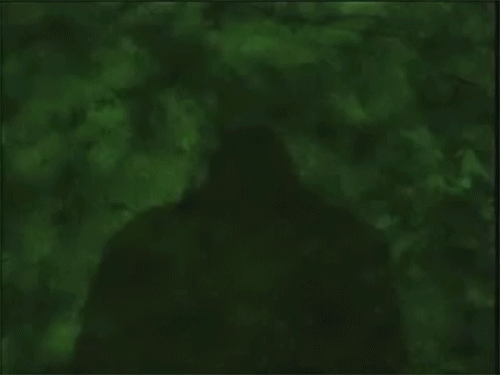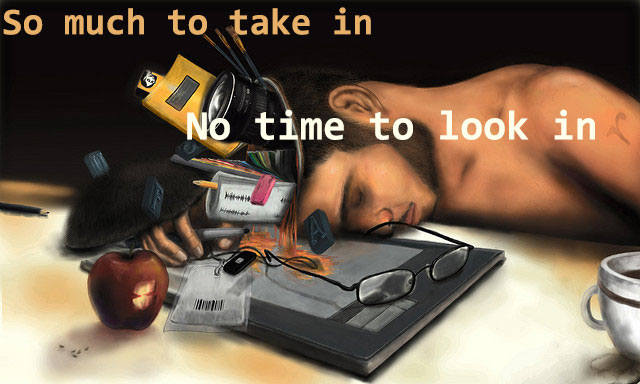So Ryan taught me this week that ‘it is super important to have a contrast of between what you like and what you don’t like when selecting content’. Michael taught me that I need to learn to ‘form an opinion about how choices are made. This is you identifying your tastes.’ Actually they have both been talking about this since the start of this course. I remember Michael saying that even when we choose to reblog something on Tumblr we are making an artistic choice and that we need to learn to understand the criteria for making a decision.
I panicked this week when I realised that this means making public and accountable choices about what we like, what we do not, and more importantly, why?
A lovely conversation with Ryan on Twitter led to the start of a note where I started collecting what I love and what I hate. I felt a little like Sheldon and Leonard above sorting comic books and could not resist a little remixing. I realise that there is the emotional dimension of being pulled towards something or away from it. Yet, there is also a third option – there is the stuff I want! I want it enough to have on my wall, to keep in my Pocket, to keep in my favourites and that I enjoy enough to view over and over again. This complicates the task significantly.
Ryan talked this week about how he is guided by his embodied experience to select content to work with:
“I notice how I feel not just on an aesthetic level. How does my body react. I am more present. I am propelled into immediate action without distraction. Fully engaged.”
It reminded me of something a gif artist I read said about her craft:
“Great GIFs you can watch forever without getting annoyed. There is no formula of how to do it — it’s a kind of magic. I play with mine until they reach the certain “groove” where I could watch them forever, then I know it’s right.”
I am fascinated by the distinction between ‘what inspires you?’ and ‘what inspires you about that person or character?’ that Ryan made on the hangout this week. From a psychological perspective the reason people find it easier to answer the second question is dissociation. It is safer to detach and talk about somebody else rather than myself. As I listened to this conversation, I realised why I have a character to sign and create my animated gifs. I have a pen name for my art. One step removed, so I can call it gif art!
If I get clearer on why I hate something it will illuminate why I like something. This is the hypothesis we are testing. I guess it starts to build a vocabulary for our art. What I find interesting is that this whole process can be seen as developing one’s emotional intelligence as well as one’s aesthetic sense. I even had Ryan say to me I should embrace my Jungian shadow when I realised that I hate stuff many people love. This felt a vulnerable place to be in. Of course, my likes and dislike say a lot about me and very little about the art I evaluate. Art psychotherapy via the animated gif! I knew it was the meaning of life, the universe and everything.
I started an art critique project on my regular DS106 blog. It has been challenging. I am trying to learn theory and apply it to DS106 art critique. It means spending time with a composition to be able to go beyond like it/hate it and learn a vocabulary to express why. If we are going to make meaningful commentary we must allow ourselves to be seen in our words.
My note on Evernote will be my creative procrastination for a while. I hate Constable, I love Mantegna. I love Hopper, I hate Klimt. I love surrealism, I hate pre-raphaelite painters. I can watch Blade Runner over and over. When a university boyfriend made me sit through Sergei Eisenstein’s films, I nearly left him. I love Bluegrass music, I hate One Direction. I love poetry, I hate fiction. But not all fiction, science fiction I love. The point I think Michael and Ryan are making is that in this selection process we can find our artistic voice. This feels both terrifying and exhilarating. It certainly feels like a long term project for me. I am starting to see a pattern and I am also starting to see a potential ‘why’ to my liking for the animated gif as a medium.
And then, just when I did not know where to go next, I found Jeanette Winterson,
We hear a lot about the arrogance of the artist but nothing about the arrogance of the audience. The audience, who have not done the work, who have not taken any risks, whose life and livelihood are not bound up at every moment with what they are making, who have given no thought to the medium or the method, will glance up, flick through, chatter over the opening chords, then snap their fingers and walk away like some monstrous Roman tyrant.
I think I have a guide. I have bought the book and will be reading with great attention. Already she has given me a metaphor to learn the language of art – it is like visiting a foreign city. I know how to do that. I have spent a lifetime learning new cultures and navigating foreign cities. And there is a method to learn how to do this well. It involves attending, humility, looking beyond the obvious, assuming that it all makes sense and taking time to find out how it makes sense to locals…may be art can be as transformative as learning about new cultures?
Jeanette says: ‘The obvious direct emotional response is never simple, and ninety-nine times out of a hundred, the “yes” or “no” has nothing at all to do with the picture in its own right.’ I see this clearly. My reactions say more about me than they do the external stimulus. As I learn to create distinctions by selecting content I am enthusiastic about, I may be finding that elusive artistic voice.
Here is one tentative rule: I am drawn to elegant solutions. I can fall in love with a sentence that expresses something with no redundant words, a line of code that has no extraneous components, a painting that tells a complex story with just one scene, I love Bach because his music has a perfect pattern…I can make sense of a lot of my likes from this heuristic, but also of many of my hates. Flowery fiction that takes 100 pages to get to the point drives me crazy, unless it is painting a picture of a fantasy world in which case it is creating something new. On the other hand, I could read this sentence forever,
“I passed a little gallery and in the moment of passing saw a painting that had more power to stop me than I had power to walk on.”
A little sentence that expresses elegantly with no redundancy all that I have been trying to express in this long post. I recognise that moment. It is rare. I experience it online with some animated gifs.
I guess there is more than one rule to our artist within. Kicker to come.



